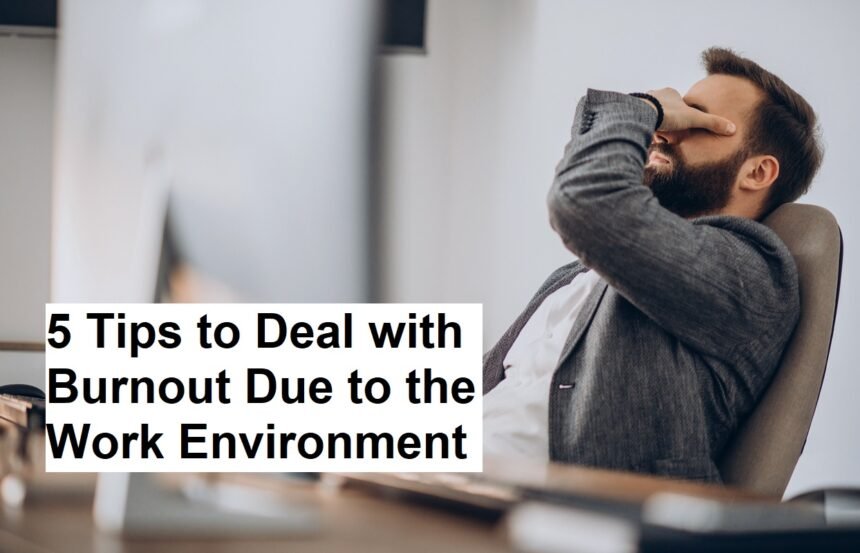Introduction
Burnout has become an increasingly common issue in today’s fast-paced work culture. It is characterized by emotional exhaustion, decreased productivity, feeling detached from work, and a sense of being overwhelmed. Often, burnout is driven not only by workload but also by the work environment itself. Toxic workplaces, poor management, lack of support, and unmanageable expectations can significantly contribute to burnout.
If you find yourself feeling exhausted, disengaged, or frustrated at work, it may be time to reevaluate your environment and adopt strategies to minimize burnout. Here are five effective tips to deal with burnout caused by the work environment.
1. Identify and Address Toxic Work Dynamics
The first step to tackling burnout is recognizing the specific factors in your environment that contribute to stress. Toxic work dynamics such as unreasonable demands, constant criticism, micromanagement, or a lack of recognition can drain your energy over time.
Once identified, consider how you might address these issues. Initiate open communication with colleagues or supervisors about workload concerns or seek clarity on expectations. If the environment remains toxic despite efforts, it might be necessary to evaluate whether staying is beneficial for your mental health. Sometimes, finding a more supportive workplace or shifting teams can make a significant difference.
2. Set Clear Boundaries
One of the leading causes of burnout related to the work environment is blurred boundaries—such as working beyond regular hours, being on call constantly, or taking less than adequate breaks. Establishing firm boundaries helps create a sense of control and reduces overwhelm.
Set specific work hours and stick to them. Avoid checking emails or taking work calls during personal time. Communicate your boundaries clearly to colleagues and supervisors, and practice self-discipline in respecting those limits. Creating these boundaries not only protects your mental health but also fosters a healthier work-life balance.
3. Create a Support System Within and Outside the Workplace
Having a reliable support network can be a buffer against burnout. Within your work environment, seek out colleagues or mentors who are positive, understanding, and supportive. Share your feelings and challenges with trusted colleagues—they may offer helpful advice or even assist in reducing your workload temporarily.
Outside of work, maintain connections with friends and family who can provide emotional support. Engaging in social activities or hobbies outside of work hours allows you to reconnect with yourself and relieve stress. Having people to talk to and share your experiences can make difficult work environments more manageable.
4. Prioritize Self-Care and Stress Management
Your physical and mental well-being should always come first. Incorporate self-care routines into your daily life that help you relax and recharge. This can include regular exercise, meditation, deep breathing exercises, hobbies, or simply taking time to rest.
Practicing mindfulness and stress management techniques can help you gain perspective and manage workplace frustrations better. If your work creates anxiety or emotional exhaustion, make time for activities that bring you joy and relaxation, and consider professional support such as therapy if needed.
5. Evaluate Your Work Environment and Make Necessary Changes
Finally, if your work environment consistently causes burnout despite all efforts, it may be time to consider a change. This could mean seeking a new role within the current organization, switching companies, or even changing careers altogether.
Before making drastic decisions, assess what aspects of your environment are unsustainable and explore options for improvement—such as negotiating workload, requesting flexible hours, or transferring to a different team. If your current work situation severely affects your health and well-being, prioritize your mental health and look for opportunities better aligned with your values and needs.
Final Thoughts
Burnout due to the work environment is a serious issue that can impact your health, productivity, and overall happiness. Recognizing the signs and actively implementing strategies to improve your experience is essential. Whether it’s setting boundaries, seeking support, or making a change, taking proactive steps can help you regain control and restore balance.
Remember, your well-being should always come first. Creating a healthier work environment, whether within your current organization or elsewhere, is crucial for long-term happiness and professional fulfillment.












